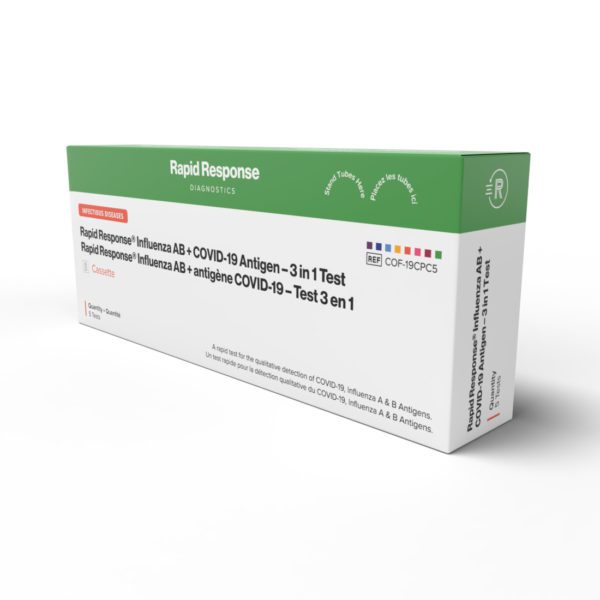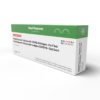Vitamin D is a unique essential nutrient that can be synthesized by your body when exposed to sunlight.
While vitamin D seems abundant in the human body, about one billion people have vitamin D deficiency worldwide.
In this article, we will provide comprehensive information about vitamin D, including its benefits, sources, associated health problems, diagnosis and treatment. We will also focus on why vitamin D deficiency matters, how you get it, and how to identify the symptoms.
What is vitamin D deficiency?
- There are several factors that lead to insufficient vitamin D levels. When you have or are going through any of these, you’re likely to develop vitamin D deficiency. Limited sun exposure: This can be, either due to lifestyle choices, cultural practices, or living in regions with less sunlight.
- Inadequate dietary intake: Although you can obtain vitamin D from certain foods, it’s challenging to meet the body’s requirements through diet alone. Vegetarians and vegans may have a higher risk of deficiency if they don’t consume fortified foods or supplements.
- Impaired absorption: Having medical conditions and gastrointestinal disorders, such as Celiac disease, Crohn’s disease and cystic fibrosis, can interfere with your body’s ability to absorb and utilize vitamin D properly.
- Darker skin pigmentation: Melanin, the pigment responsible for skin color, reduces the skin’s ability to produce vitamin D from sunlight. People with darker skin require more prolonged exposure to sunlight to generate adequate vitamin D levels than those with lighter skin.
- Obesity: People who are obese, or have higher amounts of body fat, can restrain vitamin D circulation in the body.
Vitamin D deficiency can affect people of all ages. Still, certain groups are at a higher risk, including:
- Older adults
- Breastfed infants
- Individuals with limited sun exposure
- People with malabsorption issues
What are the symptoms of vitamin D deficiency?
Vitamin D deficiency can manifest in various ways, and its symptoms may vary from mild to severe. Here are some common signs and symptoms associated with vitamin D deficiency.
Fatigue and generalized weakness
Persistent fatigue and general weakness are common symptoms of vitamin D deficiency.
Bone and muscle pain
Vitamin D deficiency can lead to bone and muscle pain, often manifesting as:
- Generalized achiness
- Joint pain
- Back pain
In severe cases, people may develop osteomalacia, a condition characterized by softening of the bones.
Increased susceptibility to infections
Vitamin D deficiency can weaken the immune response and make you more susceptible to infections.
Mood changes and depression
Low vitamin D levels may impact neurotransmitter function and contribute to mood disturbances. Emerging research suggests a link between vitamin D deficiency and mood disorders, such as:
- Depression
- Anxiety
- Seasonal affective disorder (SAD)
Impaired wound healing
Inadequate vitamin D levels can slow the healing process and impair your body’s ability to recover from injuries or surgeries.
Hair loss
Experts link vitamin D deficiency with hair loss, particularly in women.
Impaired cognitive function
Some studies suggest a potential association between vitamin D deficiency and cognitive decline, particularly in older adults. This may contribute to:
- Impaired cognitive function
- Memory problems
- Increased risk of neurodegenerative disorders like Alzheimer’s
Diagnosing vitamin D deficiency based solely on symptoms is challenging since these symptoms can be nonspecific and may overlap with other health conditions. To confirm the deficiency, further tests are needed.
Can vitamin D deficiency cause other health problems?
Vitamin D deficiency has been associated with several health problems beyond its immediate symptoms. Here are some potential health problems linked to vitamin D deficiency
Osteoporosis and increased risk of fractures
Inadequate vitamin D levels can lead to reduced calcium absorption, contributing to decreased bone density and an increased risk of osteoporosis. Osteoporosis is characterized by weakened bones, which makes you more susceptible to fractures, particularly in the:
- Hips
- Spine
- Wrists
Increased risk of certain cancers
Research suggests that vitamin D deficiency may be associated with an increased risk of certain types of cancers, such as:
- Colorectal cancer
- Breast cancer
- Prostate cancer
Cardiovascular diseases
Low vitamin D levels have been linked to an increased risk of cardiovascular diseases, including:
- Hypertension (high blood pressure)
- Heart disease
- Stroke
Autoimmune diseases
Autoimmune diseases occur when the immune system mistakenly attacks the body’s tissues. Experts linked vitamin D deficiency with the development of several autoimmune conditions, including:
- Multiple sclerosis
- Type 1 diabetes
- Rheumatoid arthritis
Respiratory infections
Some studies have found an association between vitamin D deficiency and increased susceptibility to respiratory infections, such as:
- Common cold
- Influenza
- Tuberculosis
Mental health disorders
Emerging evidence suggests a potential link between vitamin D deficiency and mental health disorders such as:
- Depression
- Anxiety
- Schizophrenia
Vitamin D receptors are present in areas of the brain involved in mood regulation, and deficiency may contribute to neurotransmitter imbalances and compromised mental well-being.
Diabetes and metabolic disorders
Vitamin D deficiency can increase the risk of developing metabolic syndrome.
Optimal vitamin D levels play a role in:
- Insulin sensitivity
- Glucose metabolism
- Regulation of blood sugar levels
How do you diagnose vitamin D deficiency?
Diagnosing vitamin D deficiency involves a specific blood test that measures the concentration of 25-hydroxyvitamin D [25(OH)D], the body’s primary circulating form of vitamin D. This blood test is known as the 25-hydroxyvitamin D test or simply the vitamin D test.
Here is a more detailed explanation of the diagnostic process.
1. Medical evaluation
Your healthcare provider will begin by conducting a thorough medical evaluation, which includes discussing your:
- Symptoms
- Medical history
- Lifestyle factors
- Risk factors for vitamin D deficiency, if any
This information helps assess the likelihood of deficiency and determine the need for testing.
2. Blood test
A medical professional will take a blood sample if vitamin D deficiency is suspected, typically from a vein in your arm, and send it to a laboratory for analysis. The most common test measures the level of 25-hydroxyvitamin D or 25(OH)D in your blood.
3. Interpreting the results
The test results will indicate your vitamin D status based on the measured 25(OH)D. The reference ranges may vary slightly between different laboratories, but generally, the classifications are as follows:
- Normal: Adequate vitamin D levels, typically between 30-50 nanograms per milliliter (ng/mL) or 75-125 nanomoles per liter (nmol/L).
- Insufficient: Mildly low vitamin D levels, often classified as between 20-29 ng/mL (50-74 nmol/L).
- Deficient: significantly low vitamin D levels, typically below 20 ng/mL (50 nmol/L).
Reference ranges may vary slightly between different sources, so it’s essential to consult with your healthcare provider to interpret the results accurately based on your circumstances and the specific laboratory’s reference range.
4. Evaluation of symptoms and risk factors
The interpretation of the test results should also consider your symptoms and risk factors for vitamin D deficiency. Sometimes, individuals with symptoms or certain risk factors may be considered deficient even if their vitamin D levels fall within the normal range.
Working closely with your healthcare provider to interpret the test results and understand your health’s implications is essential. They will consider all the relevant factors to diagnose accurately and determine the appropriate treatment or intervention if vitamin D deficiency is confirmed.
What is the treatment for vitamin D deficiency?
Vitamin D deficiency treatment aims to restore optimal vitamin D levels in the body. The specific treatment approach may vary depending on the severity of the deficiency, individual needs and underlying health conditions.

Here are some common strategies for treating vitamin D deficiency.
Sun exposure
Safe sun exposure is an effective way to increase vitamin D levels naturally. Exposing your skin to sunlight, particularly the arms, legs, and face, for 10-30 minutes a day can help stimulate vitamin D synthesis in the skin.
The duration of sun exposure required depends on factors such as:
- Skin type
- Time of day
- Geographical location
Excessive sun exposure without protection can increase the risk of skin damage and skin cancer. Balancing sun exposure while taking necessary precautions, such as wearing sunscreen and protective clothing, is crucial.
Dietary changes
Consuming foods rich in vitamin D can help increase vitamin D levels. Natural dietary sources of vitamin D include:
- Fatty fish (Salmon, mackerel and sardines)
- Fortified dairy products (Milk, yogurt, and cheese)
- Mushrooms
- Eggs
Vitamin D supplements
Your physician may prescribe vitamin D supplements, specifically D2 and D3, to treat vitamin D deficiency.
Key takeaway
Vitamin D is a crucial nutrient synthesized through sunlight exposure, yet many people still experience vitamin D deficiency, which can lead to various health issues.
If you suspect you have vitamin D deficiency, doing a blood test is recommended. Lastly, treatment includes sun exposure, dietary changes and supplements.























































